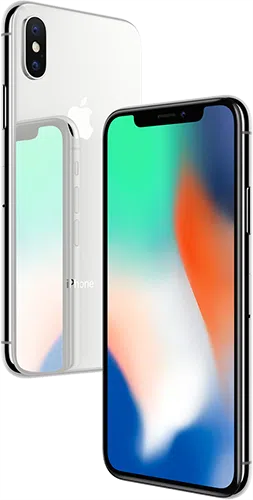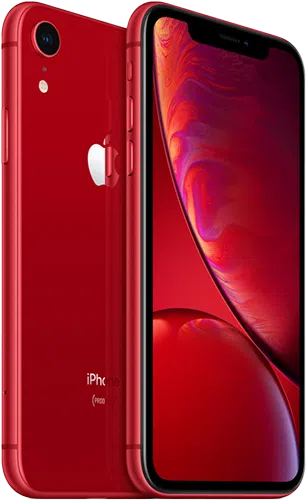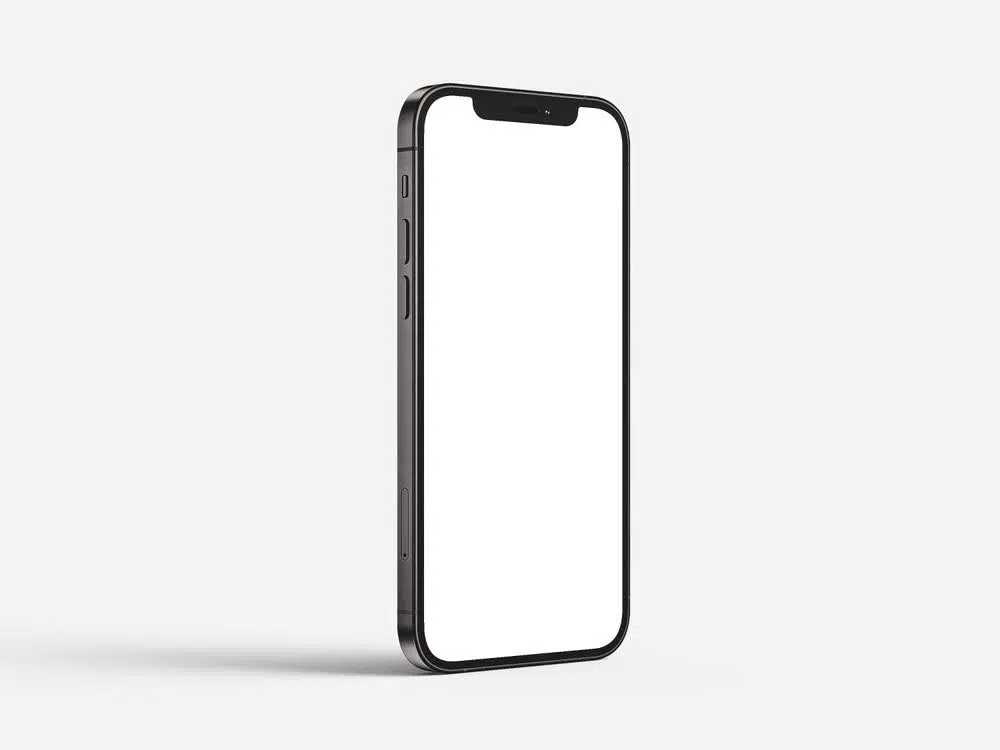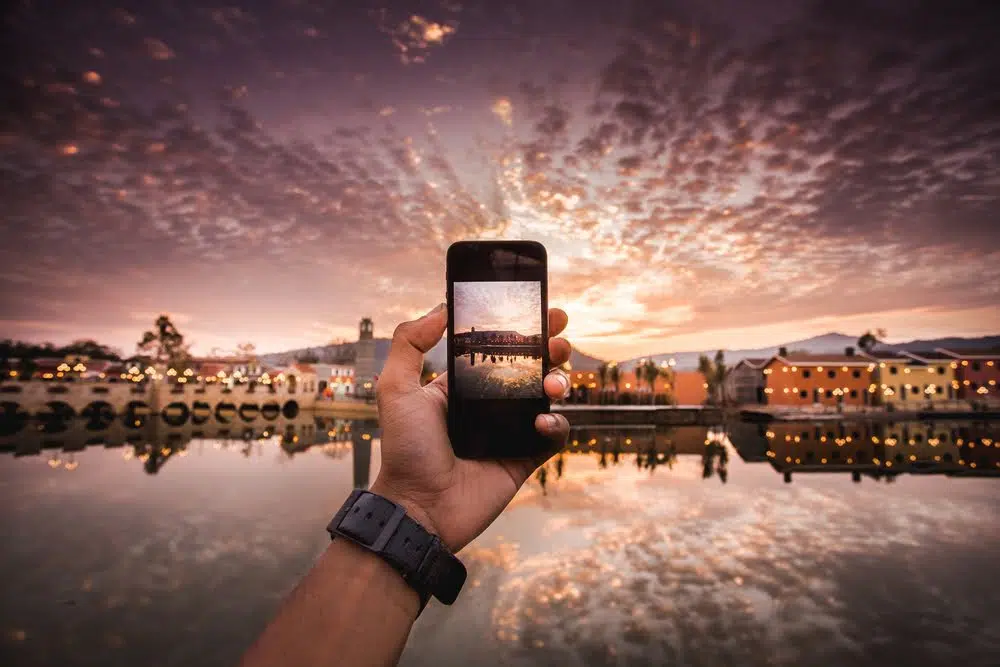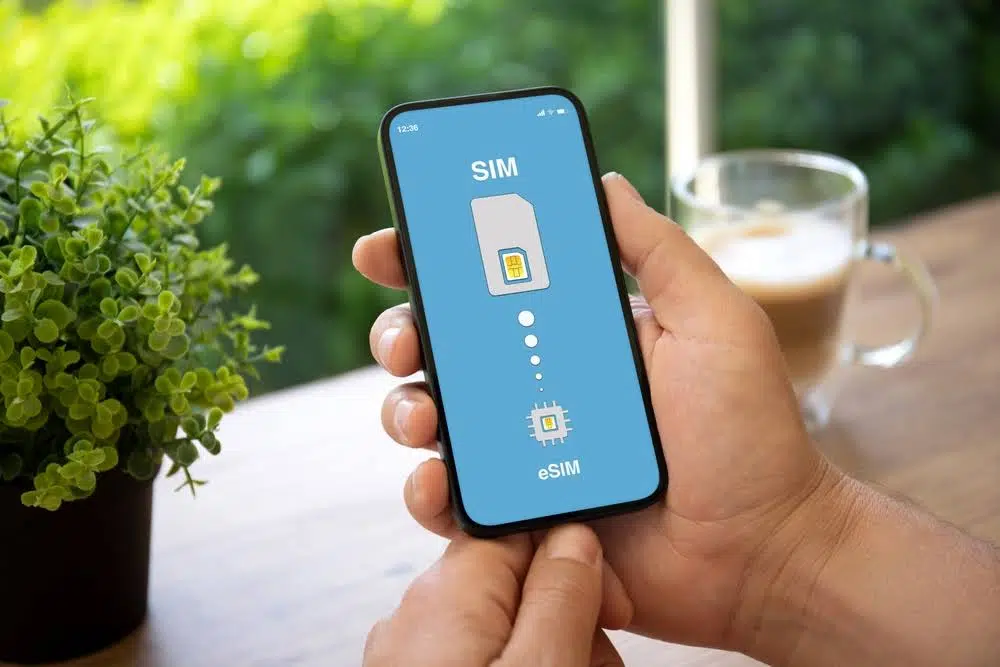
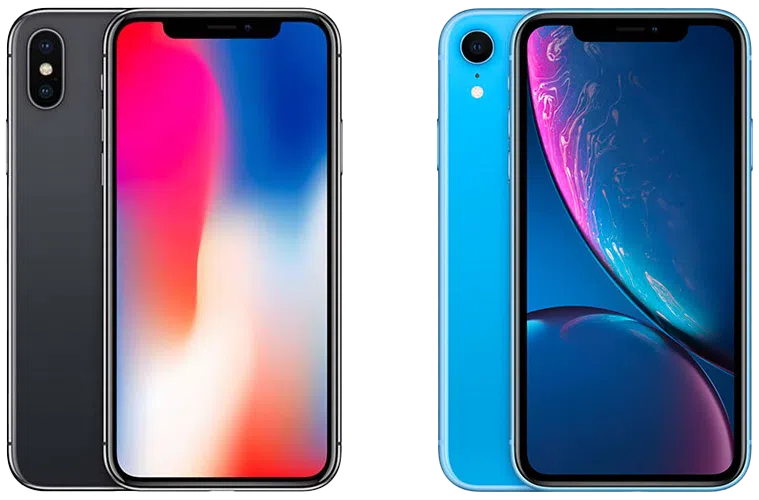
The iPhone X and iPhone XR were released in back-to-back years. The iPhone X came with a departure from previous generations, like the removal of the home button and the introduction of Face ID. The iPhone XR, released one year later, came as a more affordable option for Apple users looking for a smartphone that gave a premium feel without paying the same price.
Since 2017 and 2018, Apple has released many new generations of iPhones. But the X and XR still have value in today’s used market—and people are still buying them. If you’re looking for a new device and have zeroed in on these two models, this article compares and contrasts the most important specs and features of the iPhone X and iPhone XR to help you make an informed decision.
iPhone X vs. iPhone XR: Main Differences
- The iPhone X offers a cutting-edge OLED display for a more vibrant viewing experience than the iPhone XR’s Liquid Retina LCD display.
- The iPhone XR offers better performance than the X because it features a more efficient processor—the A12 Bionic Chip.
- The iPhone X has a dual-camera system featuring a wide-angle and telephoto lens. This feature makes for better photography capabilities than the XR’s single rear wide-angle lens.
iPhone X vs. iPhone XR: Overview
| Feature | Iphone X | Iphone XR |
|---|---|---|
| Release Date | NSeptember 12, 2017 | NSeptember 12, 2018 |
| Dimensions | 5.65 x 2.79 x 0.30 in | 5.94 x 2.98 x 0.33 in |
| Storage Capacity | 64 GB 256 GB |
64 GB 128 GB 256 GB |
| Finish Colours | Space Gray Silver |
Red Black Blue Yellow Coral White |
| Screen Size | 5.8 in (diagonal) | 6.1 in (diagonal) |
| Display | Super Retina HD OLED Multi-Touch HDR True Tone Wide Colour 3D Touch 625 nits (brightness) |
Liquid Retina HD LCD Multi-Touch with IPS Technology True Tone Wide Colour Haptic Touch 625 nits (brightness) |
| Resolution | 2436 x 11125 pixels at 458ppi | 1792 x 828 pixels at 326 ppi |
| Chip | A11 Bionic chip | A12 Bionic chip |
| RAM | 3GB | 3GB |
| Water and Dust Resistance | Rated IP67 | Rated IP67 |
| Front Camera | 7MP f/2.2 aperture |
7MP f/2.2 aperture |
| Rear Camera | 12 MP wide-angle and telephoto Wide: f/1.8 aperture Telephoto: f/2.4 aperture Optical zoom: 10x digital zoom |
12Mp wide f/1.8 aperture 5x digital zoom |
| Video Camera | 4k at 24 fps, 30 fps, or 60 fps 1080p HD at 30 fps or 60 fps 720p HD at 30fps |
4k at 24 fps, 30 fps, or 60 fps 1080p HD at 30 fps or 60 fps 720p HD at 30fps |
| Battery | 2716 mAh Talk time: Up to 21 hours Internet use: Up to 12 hours Video playback: Up to 13 hours Audio playback (wireless): Up to 60 hours |
2942 mAh Talk time: Up to 25 hours Internet use: Up to 15 hours Video playback: Up to 16 hours Audio playback (wireless): Up to 65 hours |
| Charging | Fast charging: Up to 50% charge in 30 minutes Wireless charging (Qi) |
Fast charging: Up to 50% charge in 30 minutes Wireless charging (Qi) |
| Sensors | Face ID Barometer Three-axis gyro Accelerometer Promixity sensor Ambient light sensor |
Face ID Barometer Three-axis gyro Accelerometer Promixity sensor Ambient light sensor |
| Connectivity | GSM HSPA LTE 4G Promixity sensor Ambient light sensor |
GSM CDMA HSPA EVDO LTE 4G |
| Bluetooth | 5.0 wireless technology | 5.0 wireless technology |
| Face ID | Yes | Yes |
| Apple Pay | Yes | Yes |
| SIM Card | Nano-SIM not compatible with micro-SIM |
Dual SIM (nano-SIM and eSIM) not compatible with micro-SIM |
Save up to 50% on a Certified Pre-owned Phone vs buying a new one.
Save big when you shop our selection of Certified Pre-Owned phones. 64-point inspection and a limited lifetime warranty for eligible customers*.
Shop now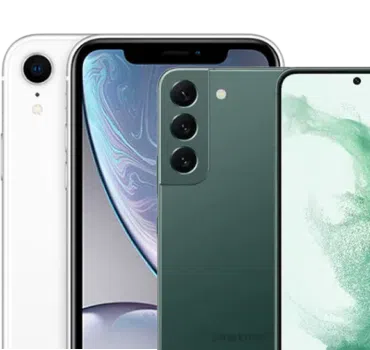
iPhone X: Key Highlights
- Super Retina HD OLED Display for better visuals
- Dual Camera System (Wide-Angle and Telephoto Lens)
- Removal of the Home Button
- Launch of Apple’s Face ID feature
- Portrait Lighting introduced
iPhone XR: Key Highlights
- Powerful A12 Bionic chip for fast processing
- The more affordable model
- Dual SIM to support a physical nano-SIM and an eSIM
- Three-tier storage capacity (64 GB, 128 GB, and 256 GB)
- Many colour options to choose from
iPhone X vs. iPhone XR Specs: Complete Comparison
Let’s dive into the details of comparing the specs and features of the iPhone X and iPhone XR.
Design
The iPhone X brought a groundbreaking new design compared to previous generations in the Apple lineup: Removing the home button.
While both phones have a glass front and back, the iPhone X has a stainless steel frame, and the iPhone XR has an aluminum frame. In terms of size and weight, the iPhone XR is slightly bigger and heavier:
- 5.94 x 2.98 x 0.33 inches
- 6.84 ounces
Compare that with the iPhone X:
- 5.65 x 2.79 x 0.30 inches
- 6.14 ounces
The iPhone XR has more colour options: Black, white, red, yellow, coral, and blue. The iPhone X, on the other hand, is only available in two colours: Silver and space gray.
Overall, the iPhone X and iPhone XR offer similar designs with edge-to-edge screens. The main difference between the two phones is the colours available and the material used for the frame.
Display
The iPhone X introduced Apple’s first OLED display. This technology allows for more vibrant colours, higher contrast ratios, and better power efficiency than previous LCD displays. On the other hand, the iPhone XR has a Liquid Retina display that uses LCD technology, making it slightly less impressive.
The iPhone X has a slightly smaller display, 5.8 inches, compared to the iPhone XR, which is 6.1 inches.
Additionally, the iPhone X offers a resolution of 2436 x 1125 pixels, resulting in a density of 458 pixels per inch (ppi), providing sharp and detailed visuals. The iPhone XR has a lower resolution—1792 x 828 pixels and a pixel density of 326 ppi.
Overall, the iPhone X’s OLED screen provides a more vibrant viewing experience than the LCD screen on the iPhone XR. While some users like the XR’s bigger feel, others think the iPhone X’s smaller nature makes the device feel sleeker and more comfortable to hold.
Performance
The iPhone X has the A11 Bionic chip with 64-bit architecture. It features six cores: Two high-performance cores and four high-efficiency cores. It also includes a three-core GPU for graphics processing.
The iPhone XR has the A12 Bionic chip with a 64-bit architecture featuring six cores: Two high-performance cores and four energy-efficient cores. It also has a four-core GPU for enhanced graphics performance.
While both models offer excellent performance and can effortlessly handle all kinds of tasks, the iPhone XR’s A12 Bionic chip makes it more powerful and efficient. This processor leads to smoother multitasking, better system responsiveness, and faster app launches.
Camera
The iPhone X has a dual-camera system on the back: A 12 MP wide-angle camera with an f/1.8 aperture and a 12 MP telephoto camera with an f/2.4 aperture. This dual camera offers optical zoom and Portrait mode, perfect for capturing distant subjects or close-ups of people. This model was also the first to introduce portrait lighting to give your photos a more dramatic feel.
The iPhone XR only has a single rear camera—a 12 MP wide lens with an f/1.8 aperture. Since it lacks a telephoto lens, it relies on digital zoom for distant shots, which tends to offer less sharpness than the optical zoom lens.
Both devices share the same front-facing camera: TrueDepth, 7 MP with an f/2.2 aperture. These features allow for Portrait mode for selfies and facial tracking for Animoji and Memoji.
Additionally, both models offer similar video recording capabilities, including 4K video, 1080p HD, and slo-mo video recording, each with different frame rate options. However, since the iPhone X has a dual-camera system, this allows for video recording with optical zoom.
Overall, the dual-camera system of the iPhone X offers more versatility when capturing different shots. However, the iPhone XR’s better performance, marked by its A12 Bionic chip, means it can handle various camera capabilities more efficiently than the X.
Operating System
The iPhone X and iPhone XR run on Apple’s iOS operating system like any iPhone. Both phones support the same core iOS features, including the App Store, Siri voice assistant, iMessage, iCloud integration, and more.
At the time of release, the iPhone X launched with iOS 11. This version introduced a redesigned Control Centre, a new App Store design, augmented reality capabilities through ARKit, and other features.
The iPhone XR launched with iOS 12, improving performance and introducing Screen Time for monitoring device usage, Group FaceTime, Memoji, and more.
Overall, the iPhone X and XR are compatible with the newest iOS updates, which means both devices can access new features, improvements, and security updates. This ability to run on the latest iOS version provides users a similar software experience.
Storage
Like any iPhone, the X and XR do not support external storage expansion through microSD cards. So, users need to choose the storage capacity that suits their needs at the time of purchase or buy more iCloud storage.
The iPhone X has two storage capacities: 64 GB and 256 GB. The iPhone XR offers three options: 64 GB, 128 GB, and 256 GB. This middle-tier option of 128GB allows users more flexibility to choose a storage variant that best fits their requirements.
When choosing between these two models based on storage, users must consider their personal preferences and the amount of storage they need for their daily activities. For example, you can opt for a larger storage capacity if you rely heavily on your phone for photos, videos, apps, and other data.
Battery and Charging
The battery and charging capabilities are essential to any smartphone’s overall user experience.
The iPhone XR generally provides better battery life than the iPhone X, thanks partly to its more power-efficient A12 Bionic chip and other optimizations. According to Apple, the XR offers up to 25 hours of talk time compared to 21 hours of battery life for the iPhone X.
Factors such as usage patterns, screen brightness, and background processes can significantly impact the battery life of each device. For those looking for ways to improve battery life, check out these expert tips.
Both phones support fast charging, providing a quick option for users who need to top up their battery on the go. Both models also support wireless charging. New iPhone X and XRs came with the following in their boxes for your charging needs:
- iPhone X: Lightning to USB Cable and USB power adapter.
- iPhone XR: USB-C Lightning Cable (charging brick not included).
Keep in mind that if you buy a used or refurbished phone, these devices may not come with their original accessories or boxes.
Audio
Audio features include speakers, formats, headphone connectivity, and stereo sound. The iPhone X and XR feature Bluetooth and stereo speakers for richer audio experiences.
The iPhone X supports various audio formats, including:
- AAC-LC
- HE-AAC
- HE-AAC v2
- Protected AAC
- MP3
- Linear PCM
- Apple Lossless
- FLAC
- Dolby Digital (AC-3)
- Dolby Digital Plus (E-AC-3)
- Audible (formats 2, 3, 4, Audible Enhanced Audio, AAX, and AAX+).
The iPhone XR supports the same audio formats plus Dolby Atmos.
Both iPhones lack a traditional 3.5mm headphone jack. Users can use Lightning port-compatible headphones or compatible wireless solutions for audio output.
Overall, the iPhone X and XR possess similar audio features. In most cases, your audio experience will depend on the quality of the headphones you choose.
Features
Splash, Water, and Dust Resistance: The iPhone X and iPhone XR have an IP67 rating, making them resistant to water and dust. Generally, they can withstand submersion in up to one meter (three feet) of water for up to 30 minutes. This level of resistance adds a layer of durability, protecting each device from accidental spills or exposure to rain.
Face ID: One of the standout features introduced with the iPhone X is Face ID, Apple’s facial recognition technology. The TrueDepth camera system captures and analyzes facial features to securely unlock the device and authenticate various actions. This feature is seamlessly integrated into both the iPhone X and XR, providing users with a convenient and secure way to access their phones.
Apple Pay: The iPhone X and iPhone XR support Apple Pay, Apple’s mobile payment and digital wallet service. Users can securely store their credit and debit cards on the devices and make contactless payments at supported merchants using Face ID for authentication. The implementation of Apple Pay is consistent across these models, offering a convenient and secure payment method.
SIM Card: While both phones use a nano-SIM card, the iPhone XR introduces the option for dual SIM capability. Depending on regional and carrier support, users can choose between a physical nano-SIM and an eSIM (electronic SIM) or use two physical nano-SIM cards. This dual SIM option provides flexibility for those who require multiple phone numbers or travel frequently.
Accessibility
Accessibility features are crucial to Apple’s design philosophy, ensuring everyone can comfortably use their devices. The iPhone X and iPhone XR offer comprehensive accessibility features, including VoiceOver, Magnifier, and Display Accommodations. These features assist users with visual, auditory, and motor impairments, providing an inclusive user experience.
Price Comparison
Upon release, the iPhone X’s MSRP was $1,319 (CAD), and the iPhone XR started at $1,029 (CAD). In the used phone market, the value of a baseline 64 GB iPhone X ranges in the high $200s, while a used iPhone XR ranges in the mid to high $200s. Depending on the condition, storage capacity, and time of purchase, these prices are subject to change.
* Price updated as of July 2025
Availability
While much time has passed since the iPhone X and iPhone XR were released, they’re still available on the market today at Mobile Klinik in Certified Pre-Owned (CPO) condition. These previously-used devices have undergone rigorous testing and inspection to ensure they meet your standards and expectations.
Time for an upgrade?
Save big when you trade in your old phone for a new Certified-Pre-Owned phone. Get the latest features at a fraction of the cost.
Get offer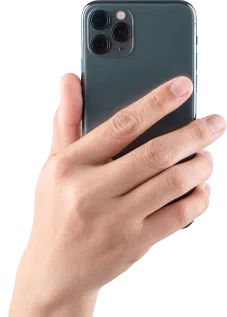
What’s The Verdict?
The decision to buy an iPhone X or. an iPhone XR depends on your needs and preferences:
Best Device Overall
The iPhone X is considered the best device overall due to its cutting-edge display, better camera capabilities, and features.
Best Device for Performance
If you use your phone for lots of different tasks, the iPhone XR is the better option with its A12 Bionic chip. This processor allows for seamless multitasking and easier functionality compared to the iPhone X.
Best Viewing Experience
For those who cherish their time streaming videos and movies or playing games, the iPhone X’s OLED display provides a more vibrant viewing experience than the iPhone XR’s LCD display. However, keep in mind that while the iPhone X may offer more impressive graphics, the iPhone XR may process videos and games more easily—so it’s up to you to decide what you value more: Visuals or ease of use.
Best for Photography
The iPhone X is a clear winner when it comes to camera capabilities. Since it has a dual-camera system on the back, featuring a wide-angle and telephoto lens, it allows for sharper images when zooming in on objects from a distance.
Best Battery Life
If you’re looking for a device that can hold enough battery life for all your daily activities, the iPhone XR offers more capacity. Its faster processor and other optimizations allow for up to 25 hours of talk time—four hours more than the iPhone X. Keep in mind that when you buy used iPhones, the battery capacity may have diminished. This means that it may not hold the same capacity as it did when it was new. If your device requires a new battery to revive its all-day functionality, bring it to us at Mobile Klinik.
Best Value
While the iPhone XR came at a much more affordable price upon release, in the used phone market, the difference is slight due to the depreciation of both models. These prices greatly depend on the condition of the used phone, the storage capacity, and the time of year you purchase. Prices may also differ between sellers.
When choosing between the iPhone X and XR, it’s essential to evaluate your values and requirements:
- Are you looking to save money?
- Do you need a device that will sustain many different mobile activities at once?
- Do you rely on your phone for capturing photos?
- Do you stream a lot of movies and videos?
Asking yourself questions like these can help you narrow down your priorities. Overall, the iPhone X and XR each have notable qualities that can effectively meet the needs of different iPhone users.
Frequently Asked Questions
Is the iPhone X and iPhone XR the same size?
No, the iPhone X and iPhone XR are not the same size. The iPhone X is 5.65 x 2.79 x 0.30 in, 6.14 oz, and has a 5.8-inch display. On the other hand, the iPhone XR is 5.94 x 2.98 x 0.33 in, 6.84 oz, and has a 6.1-inch display.
When choosing the right phone for you based on size, it’s essential to consider factors like the comfort of holding the device in your hand and how big you want the screen for your user experience.
When were the iPhone X and iPhone XR released?
The iPhone X was released on September 12, 2017, and the iPhone XR was released one year later, on September 12, 2018.
Can you use the same case for the iPhone X and iPhone XR?
You can’t use the same case for both phones since the iPhone X and XR have different dimensions. With that said, you can often find the same style of phone case tailored to the size of different iPhone models, so if you find one that works for you with one phone, you can find a similar option in other sizes!
Is the iPhone XR more expensive than the iPhone X?
The iPhone XR is generally less expensive than the iPhone X. Upon release, its MSRP was $1,029 (CAD) compared to the X’s $1,319 (CAD) price tag. In the used market, the two phones generally even out at similar prices. This is thanks to depreciation, with slight variations depending on condition, storage capacity, and when you buy your device. Typically, the XR remains a little bit more affordable.
